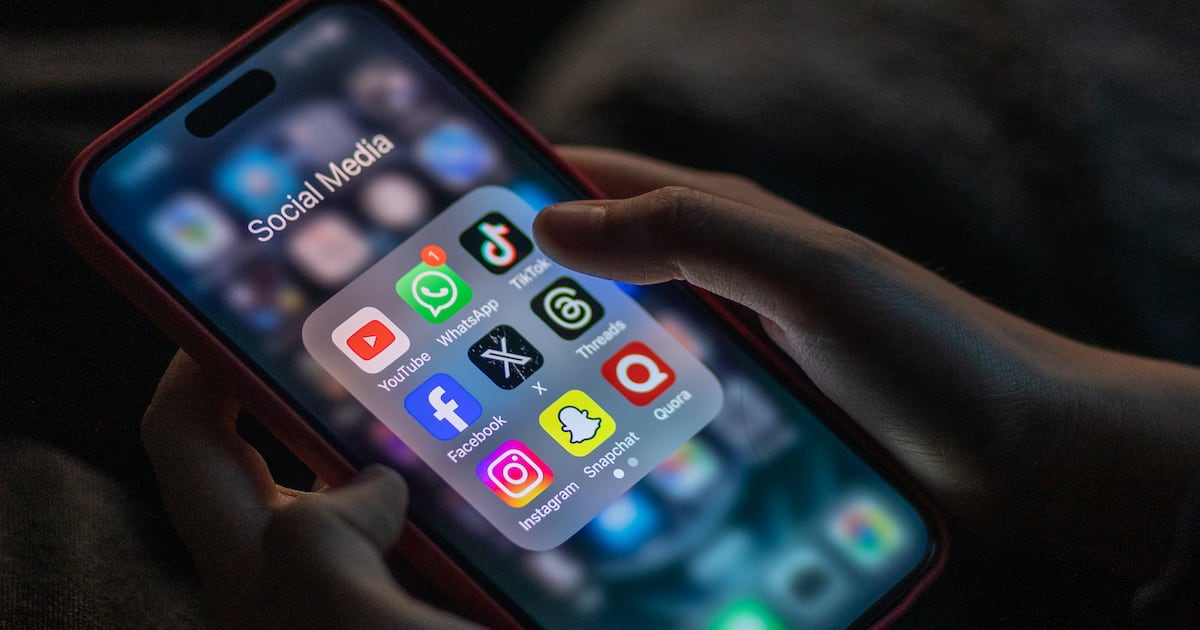In the near term, luxury is staring down a hard road.
Consumers in China and now the US are pulling back on high-end spending. Aspirational shoppers who went on stimulus-fueled splurges after the pandemic are back to budgeting their dollars. And some critics say the industry has become stagnant creatively as brands churn out formulaic, logo-heavy merch thatâs failing to excite customers.
But Bernstein analyst Luca Solca predicts luxury can count on at least one big tailwind â though brands are unlikely to brag about it in marketing or on earnings calls. The insecurity and alienation social media is fueling in young people will push them to buy luxury goods in hopes their new purchases will somehow elevate them to better versions of themselves, Solca wrote in a recent research note.
âThe kids arenât alright, and luxury goods can help them feel better,â the report reads. âFor some, luxury brands can help with a rising feeling of inadequacy associated with higher public exposure by promising to morph you into your ideal self ⦠For others, luxury goods can be a means of self-expression.â
Solca and crew arenât prescribing luxury items as a solution to these problems. Rather theyâre describing what they see as societal trends that, whatever their other consequences, should be of long-term benefit to the luxury industry.
In their view, the increased time people are spending online is eroding their self-esteem and amplifying feelings of inadequacy. This and other ill effects of social media have been hot topics in recent months following the publication of âThe Anxious Generationâ by New York University social psychologist Jonathan Haidt, who argued that todayâs âphone-based childhoodâ is spurring a mental-health epidemic.
While the evidence that social media and smartphones are responsible for the crisis isnât so straightforward, the Bernstein team believes that online clout-chasing and other structural shifts in society play to luxuryâs advantage.
Another trend they point to, for instance, is the rising number of young people living with their parents. Thatâs in part because many have been priced out of buying their own home. Still, without the financial burden of a mortgage, they can direct more of their money towards other things, like clothing and handbags. Millennials and Gen-Z also stand to inherit a considerable amount of wealth that theyâll be able to spend.
The picture of legions of young people living at home and spending hours on their phones as they buy luxury goods to soothe their social media-induced mental disorders is a bleak one. Though just how much of the blame social media really owns is debatable. Researchers such as Candice L. Odgers, a developmental psychologist and critic of Haidtâs, have noted there isnât compelling evidence that digital technology is a major contributor to adolescent depression compared to other factors like family history and exposure to harmful conditions such as violence or discrimination.
But itâs not hard to see the role social networks play in how we assign status today. The reach and visible tallies of followers and âlikesâ they provide have made them a powerful channel for gaining and showing off status. One group of researchers found, unsurprisingly, that this âmetric-based digital statusâ can breed envy.
Luxury products, meanwhile, have been recognised status signifiers since at least the time of economist Thorstein Veblen, who described how people use scarce and expensive items to broadcast their wealth and enhance their social prestige. The Bernstein team noted that part of our identity is made up by what we own. If youâre feeling insecure about your online image, what better way to boost your worth in the eyes of others than posting shots with your luxury goods? (âThose more secure in their status have always had less need for reassurance with luxury goods,â the Bernstein analysts added.)
Of course the real status marker of social elites is arguably cultural capital â not just having luxury goods but having the right luxury goods. That distinction, which often means less-conspicuous luxury items â ideally bearing a patina indicating generations of wealth â as opposed to loud, ostentatious ones, marks the difference between so-called New Money and Old Money, as author W. David Marx detailed in his book âStatus and Culture.â
But whether someone chasing likes for self-esteem posts a brand new Birkin or a beat-up Kelly bag like the one Mary-Kate Olsen has drawn attention for, itâs good for luxury either way.

